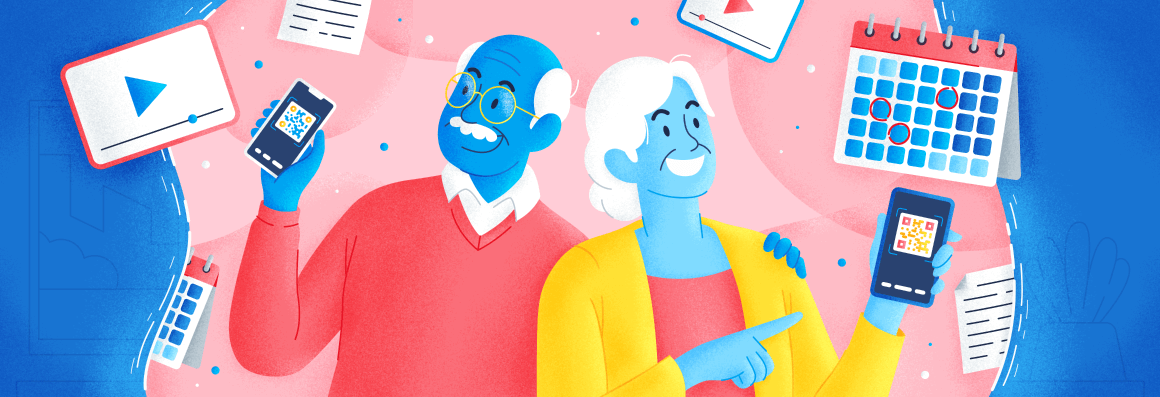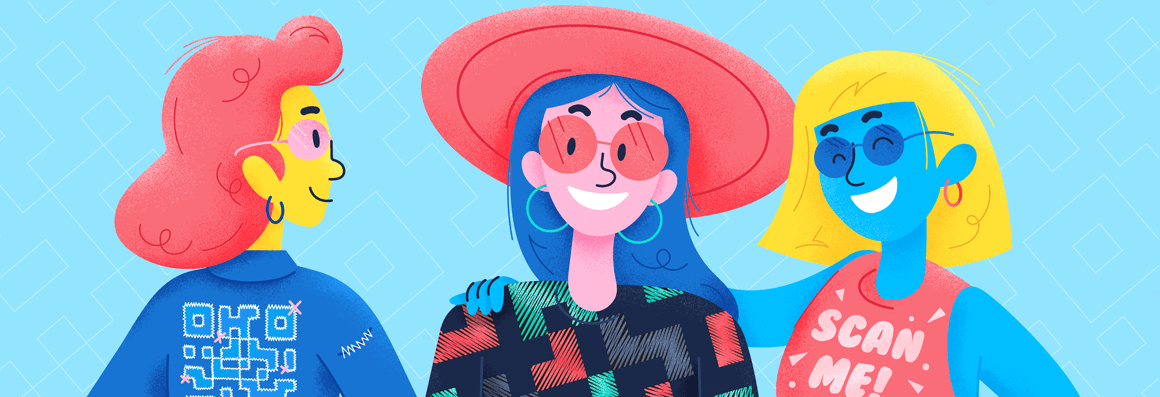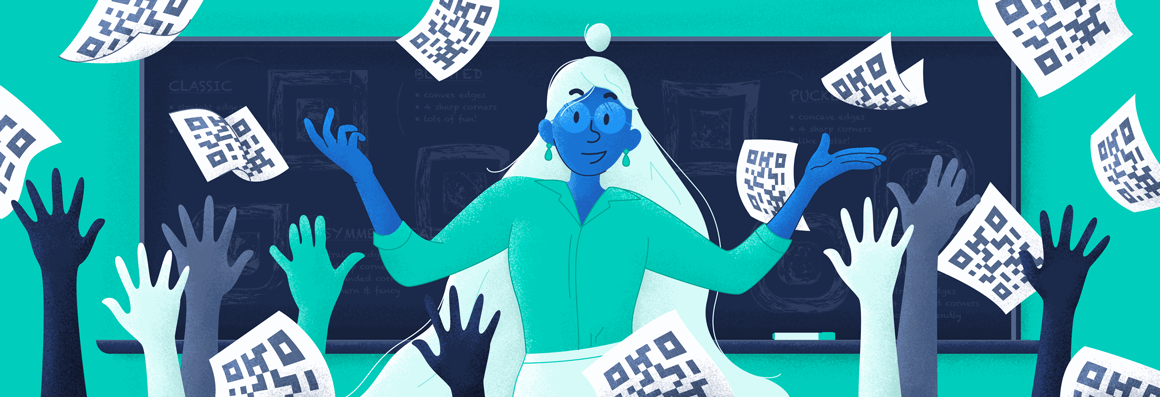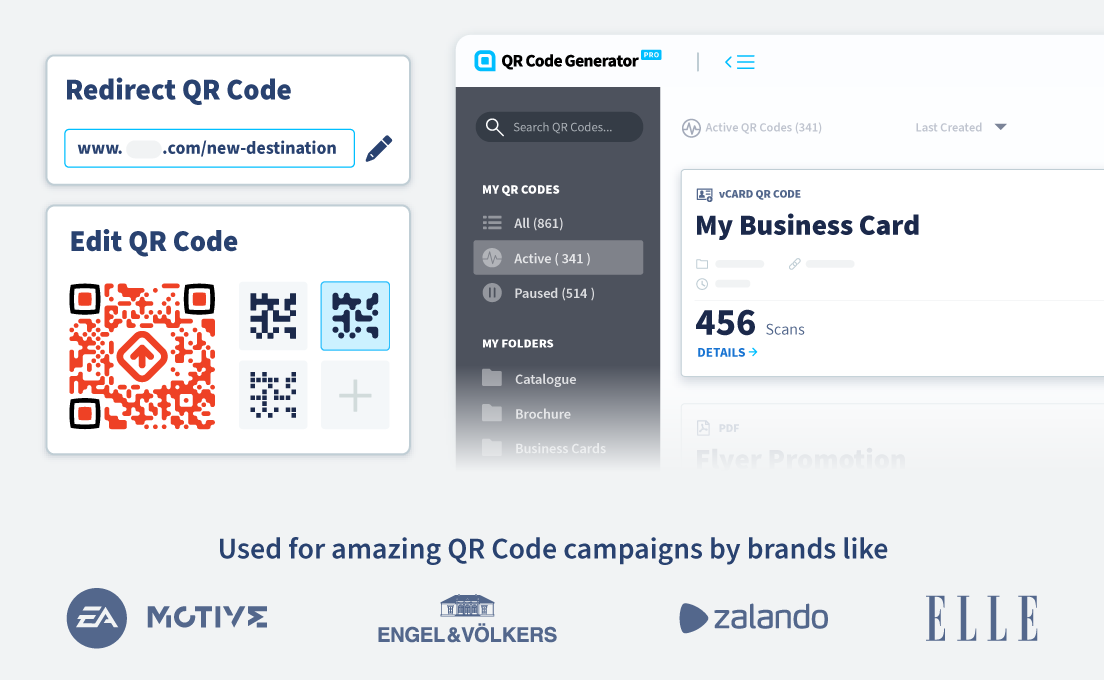- Best Practices ●
- COVID-19 ●
- Industry Trends ●
- Partners ●
- Product ●
What To Know About Designing QR Codes for Senior Citizen Services
Who says tech is just for the youth? Greater longevity is redefining the way we shape the story of old age while pushing businesses and governments to adapt the way goods and services are packaged for the general public.
In that same vein, the narrative that “new technologies are only for younger generations” is only true if you ignore how modern home tech can give older adults greater access to healthcare and other resources that improve their well-being.
As life expectancy gradually increases, so should how we shape technology for older adults—as well as rethink how service and UX design can better fit the lifestyle of older consumers.
With QR Codes on marketing materials revolutionizing information-sharing platforms on and offline, many types of QR Codes can help pioneer helpful technology and future service designs for older adults.
Top benefits of QR Codes for senior citizens
A QR Code (short for Quick Response Code) is a scannable code that can hold an impressive amount of data. Usually, they’re used to link to websites, tools, or actions.
The advent of QR Code solutions for senior citizens translates into providing easier access to products and services in more understandable formats. Instructions can now be videos instead of long manuals with small font sizes, putting QR Codes at the forefront of the battle against ageism.
They can be described as the customizable storage units of digital content on print materials, existing at the intersection of online and offline platforms. They allow instant access to more information more clearly and redefine how we interact with everyday life.
For older adults with impaired hearing or vision, bringing the advantages of the digital world to the physical one can make a huge difference in quality of life. And with the variety of QR Code solutions to boot, they can make a small but powerful impact when it comes to information sharing.
Ease of access to information
When connecting senior citizens with information, it’s important to reduce the number of steps required to access it. You should also choose formats that are easy to understand.
Sure, important information—like medical information—can either be easily searched on the web or handed out at the doctor’s office on a printed sheet of paper. But the first option sends people on a hunt through the vast noise of the internet, while the second is, more often than not, formatted in blocks of text with some illustrations. Both options can be a bit overwhelming for some older individuals getting acquainted with the internet or coping with certain cognitive impairments.
The PDF QR Code is the best of both worlds. Instead of printing and handing out sheets of paper, simply share a flier with the QR Code and scanning instructions. Once scanned, patients can access the necessary information on the mobile device of their choice, whether that be a smartphone or a tablet.
Once patients have the PDF, they can brighten the screen, zoom in, and make the text bigger. In essence, they can adapt the information to their needs.
A PDF QR Code on a poster provides patients with further information on tips and treatments that can be saved to their mobile devices to be viewed later.
Enhanced safety
You can use QR Codes on medical bracelets, contact information cards, prescription bottles, and other objects senior citizens may use on a daily basis. The ability to quickly access information associated with their medical care is important to enhance day-to-day safety.
For example, patients with Alzheimer’s disease can wear a QR Code bracelet or badge. If they get lost and become confused, strangers can scan the QR Code to get contact information for that person’s family.
Medical bracelets for people with other conditions may help paramedics get information like blood type, medications, and more if that person becomes unconscious.
Used on prescriptions, senior citizens can scan the QR Code to easily refill their medication. The code could also lead to more detailed information on prescription schedules and side effects.
QR Codes attached to wheelchairs, canes, glasses, and other assistive devices could lead people to information about who the devices belong to. That means seniors who lose their devices might be more likely to get them back.
More independence
As technology evolves, new ways senior citizens can keep their independence emerge. QR Codes have become an important tool to equip older adults to access what they need without help.
QR Codes can help older adults access medical records without navigating online systems. Print materials can link to video or audio versions of the text so that senior citizens with difficulty reading small print can still get the information they need.
The Event QR Code is commonly used by businesses for marketing events such as concerts or conventions. But adding a touch of ingenuity to this QR Code solution can help those who need medical care set reminders for appointments or schedule medication.
If applied, this QR Code can help senior citizens set automatic reminders on their preferred calendar for important medical events, like their next treatment appointment or flu shot.
An Event QR Code on a table tent at a doctor’s office invites people to scan it to set a reminder for their next flu shot appointment.
Innovative ways to apply QR Codes in senior service design
QR Codes can benefit seniors in everyday activities, but caregivers in senior care settings can also use them to streamline processes, keep more accurate records, and share medical information.
Healthcare management
Healthcare management is one of the most common ways QR Codes benefit senior citizens. Caregivers can use them for identification, sharing complex medical information, and managing prescriptions.
You can place QR Codes on medical ID bracelets, prescription bottles, and medical information brochures. Doctors can use them to ID patient images, such as MRIs and X-rays. A QR Code at an older adult’s residential care doorway can share all the information caregivers may need about that patient in a single scan.
Memory care and management
As previously mentioned, QR Codes can be an important tool for patients with memory loss. Patients can use them as a form of ID. People can use the QR Codes to contact caregivers if the patient gets lost.
QR Codes have increasingly found innovative uses in memory care treatment. One study used QR Codes in card activities designed to help trigger memories in dementia patients.
Social engagement
QR Codes are a great way to simplify daily social engagement. For example, they can scan QR Codes in order to make a call to a friend or family member—it might be easier for seniors to use a QR Code for frequently contacted people than to navigate phone commands.
Seniors could also keep QR Codes in their homes. The Codes could lead to online community boards that show local events, meetups, and clubs. This could make it easier to regularly check what’s going on in their neighborhood.
Interactive health education
QR Codes can make health education more interactive for seniors. Giving access to different versions of the same information can help patients learn.
Imagine a physical therapist sending a senior patient home with a QR Code that links to videos showing the physical therapy moves that they should practice. QR Codes could also be used on bulletin boards in assisted living homes to link residents to nutrition advice and mental health tips.
Medical alert bracelets
As mentioned earlier, QR Code badges or medical alert bracelets can help paramedics or other concerned citizens easily access healthcare information and caregiver contact information.
Japan, which faces an aging population, has turned to another wearable QR Code—stickers. It is now standard practice to use fingernail stickers with QR Codes to help lost dementia patients get home. Concerned citizens who find the lost patient can scan the QR Code to get caregiver contact information.
How to design senior-friendly QR Codes
Seniors are likely to struggle with their eyesight. Over a quarter of seniors have some kind of vision impairment. Tiny, hard-to-see QR Codes will be counterproductive when used with older adult populations.
Another challenge is that QR Codes may be new technology to many seniors. But don’t worry—best practices for QR Code design make it easy to create senior-friendly QR Codes.
Create clear instructions
Don’t shy away from instructing people on what to do when they see your QR Code. You can even go beyond the call to action (CTA) and add straightforward instructions that guide first-time scanners through the process, like “open camera app” and “point back-facing camera at the QR Code.” If you need some inspiration on guides for scanning Codes with Android or iOS phones, check out our QR Code guide.
A video QR Code gives buyers the user guide manual in video format, accessed with a simple scan.
Keep the QR Code size in mind
If you know seniors will be using your QR Codes, you should take the size of the code into consideration. While codes can work as small as 2 cm wide, be sure to print them larger for seniors so that they’re easy to spot and scan.
Use the correct file type for print so that they print clearly. We recommend downloading SVG or EPS formats when printing materials with QR Codes because these file formats can scale up or down without affecting resolution.
Use color and contrast for scannability
As we age, our color sense becomes more opaque. This is why distinguishable colors are better than subtle shades when designing your QR Codes. High contrast and bright colors create the perfect conditions for your QR Code to be easier to notice and scan—whether the consumer has visual impairments or not.
Focus on readability
Text accompanying a QR Code should be clear, concise, and easy to read. CTAs and instructions for using a QR Code won’t be much help if the text is small and blurry. Large text in readable fonts will help empower seniors’ independence when using QR Codes.
Help senior citizens thrive with QR Codes
Care centers, governments, and loved ones widely use QR Codes to help senior citizens. Their ease of use and accessibility make them the perfect tool to connect older adults to digital tools for managing their own care, staying active with their community, and learning new things.
These Codes also have a place in senior care. They can help make processes at healthcare facilities more efficient and offer caregivers tools to keep seniors safe.
QR Code Generator PRO has the tools you need to empower and care for seniors with QR Codes. Sign up today to start building effective custom QR Codes that help seniors thrive.






 Add custom colors, logos and frames.
Add custom colors, logos and frames.
